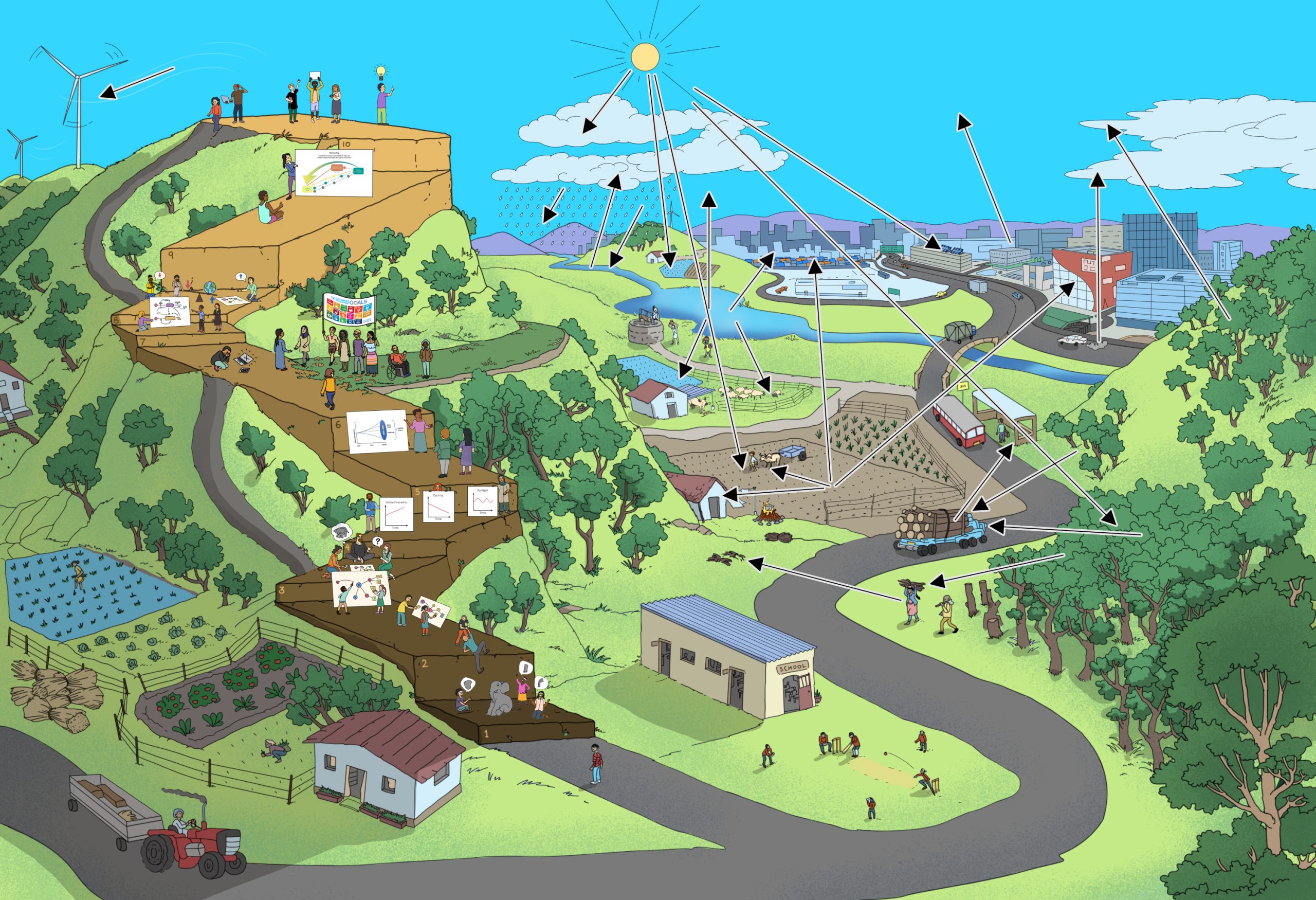Systems thinking is the ability to describe and/ or visualize a part of a complex reality, express that part of reality as a model understand the model as a system, use the model to explain the behaviour of the system, anticipate the behaviour of the system, and evaluate its impacts on sustainable development, identify potential points of, and types of interventions, generate options to act, assess their impacts in the frame of sustainable development, and decide whether further actions are necessary or not.
What is the aim?
To enable learners to:
- enrich the description of reality they created in Step 1, and
- transfer this description into a model of a static situation
- assess the quality of a model
Activities, tasks, and suggested learning methods
- How does cotton become a pair of jeans? Share these or similar images and initiate a discussion among the learners.
- Encourage the learners to review multiple sources of information:
- Review the graphic on cotton production
- Conduct internet research.
- Watch videos such as these (Video content analysis method)to get information for the structured description and identify elements and (inter) relationships of how the cotton becomes a pair of jeans.
- Cotton Production: from field to factory!(https://www.youtube.com/watch?v=jJnjFg94l3s)
- MO’CYCLE MANUFACTURING JEANS IN ITALY(https://www.youtube.com/watch?v=6-fBWIG5rPI)
- In groups, learners may create a concept mapwith the information they have gathered and prepare a model of how cotton becomes jeans. For your reference, an example of a partial concept map on Jeans is presented below in Figure 2 – Cotton Model.
- Next, the learners may explain their model to the class and compare if all groups have the same information.
- Discuss what is the purpose of the cotton-jeans system. You may need to share some examples to get the learners to reflect on the different purposes of the cotton-jeans system:
“The purpose of the system of production of cotton and manufacture of jeans is to …
- earn a livelihood for farmers
- profits for the jeans company
- clothes for people, etc
For these different activities, learners may be supported by learning methods such as:
Suggested Further Leading Questions
- Does the model (concept map) you have developed correctly present the reality of how cotton is produced?
- Is the model suitable to understand a reality that may change in the next moment or sometime in the future?
- If the reality is not static, should we look for models that can also depict the dynamic nature of reality?
Figure 2 The global supply chain of cotton jeans

Figure 3 – An example of the cotton jeans model

Example of a learner’s description
Cotton characteristics
“Cotton grows best with her feet in the water and her head in the sun!“. This saying describes the climatic conditions in which cotton grows well. Semi-arid and arid areas where sufficient water resources for intense irrigation are available are ideal for growing cotton, such as Central Asia, India, Turkey, Egypt, and China’s western region.
The production of 1 kg raw cotton requires 11,000 litres of water, and in some areas even more than 20,000 litres. Globally, cotton production needs 256 km³ of water, an amount, which is enough to supply 120 Litres of water daily to each human being worldwide. 2500 litres of water are required to produce one single T-shirt.




